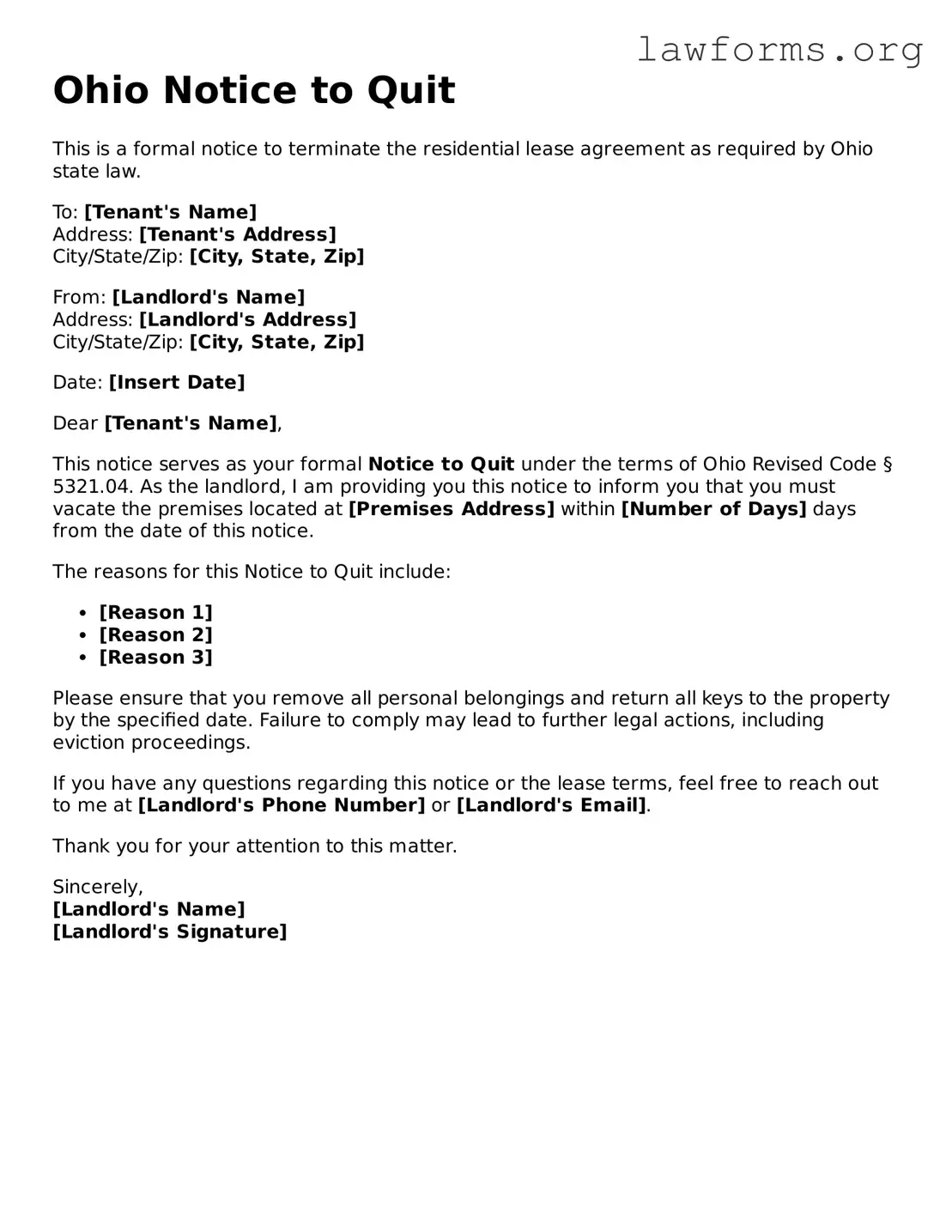Attorney-Approved Notice to Quit Template for the State of Ohio
The Ohio Notice to Quit form is a legal document used by landlords to inform tenants that they must vacate the rental property. This notice typically outlines the reasons for termination of the tenancy and provides a specific timeframe for the tenant to respond or leave. Understanding this form is essential for both landlords and tenants to ensure compliance with Ohio rental laws.
To get started on filling out the Ohio Notice to Quit form, click the button below.
Customize Document Online
